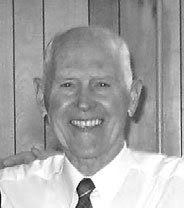
So far, the data that we have gathered has been qualitatively focused. We are now in the midst of designing our third experiment, which will apply what we have learned from obsevering our previous work and with an intent to do intensive chemical analysis and get a quantitative picture of our mycoremediation process. For the past year, our efforts are best described as a feasability study, examining the potential pitfalls and regionally-specific parameters that anyone applying this technique on a grand scale would be wise to account for.
Our qualitative picture of our system is encouraging. We have successfully grown heathy mycelium and mushrooms on concentrations of up to 40% aged petroleum. The application of oyster mushroom spawn to contaminated soil has drastically reduced the odor of petroleum as compared to sites where spawn was not added for control. This observation is important, because the toxic fraction of crude oil are the Polycyclic Aromatic Hydrocarbons (PAHs) and they are the same compounds you encounter when your city is repaving roads on a hot day. These stinky vapors eventually off-gas and leave behind a largely inert substance we call asphalt, or more specifically asphaltenes. When I say inert, I mean they are not as bioavailable to the living systems they share proximity with and thus, the reduction of oily smell is an indication of a reduction in these same PAHs. Supporting this hypothesis is the difference between fungal-treated contamination layers and controls to the touch. Controls (without mycelium) were still sticky to the touch and smearing our latex gloves months after the experiment began, while those that had spawn added were dry to the touch. This further bolsters the our supposition that the PAHs have been significantly reduced, since the presence of PAHs in a sample of petroleum results in a liquid state at normal temperatures.
None of this is the final word on our work, since we still need extensive chemical analysis to support our hypothesis. Luckily, we feel confident that we are ready for this important phase and we have worked out some of the "bugs" in previous experiments. These include providing adequate shelter and security for that shelter and site, refining our technique of acclimating spawn to oil-metabolizing, remediation site design, questions about reinoculation and avoiding biological contamination in a diverse, tropical environment.
As the Amazon Mycorenewal Project enters into another year of work, we hope to focus on skill-transfer with our partners in Lago Agrio and the codifying of all we have done so that research can continue in affected areas with a reference onhand. Since there are many types of contamination throughout the Sucumbios Province, we presently feel that the potential for success with mycoremediation in the Amazon focuses on oil-saturated sediments, of which unfortunately there is no shortage.
Like all nonprofit endeavors, we are working within a limited budget and will ultimately need additional funding to continue fleshing out the most efficient and appropriate applications of mycoremediation in the Amazon, not to mention continuing the education of community leaders on its use. Our sponsoring organization, Cloud Forest Institute, is a registered 501c3 nonprofit that will gladly accept donations of any amount to support our work here. Additionally, grant recomendations can be sent to me directly at the email located on this blog.
Finally, I want to thank all of my readers for following our work where ever you are and for your words of support. Thanks!


































